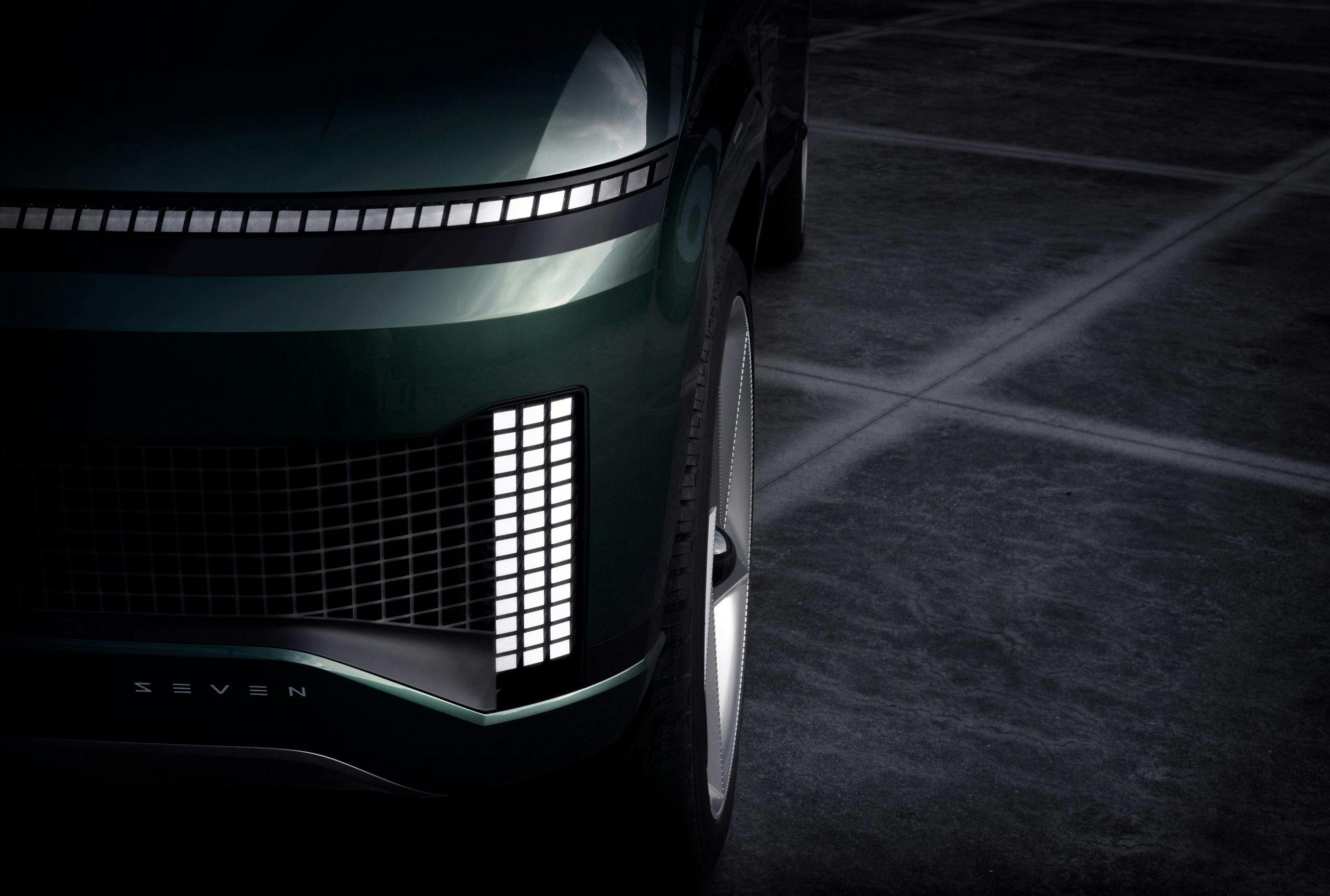2022 Grand Cherokee’s price nudges up, Hyundai keeps electric sexy, a suitcase EV charger
2022 Jeep Grand Cherokee leaps upmarket with minimal uptick in price
Intake: Pricing for the fifth-generation 2022 Grand Cherokee two-row is out, and there’s a few figures to note. First, the bottom rung: A 4×2 V-6-powered Grand Cherokee Laredo will run you $39,185, including an eye-watering $1795 for destination. (For context, a 2021 Grand Cherokee Laredo E, with zero options but with destination, rings the register at $37,055.) At the top of the ladder, a Grand Cherokee Summit Reserve equipped with the V-6 and 4×4 will start at $65,160 including destination. The off-road-oriented Trailhawk model starts at $53,070 with the Pentastar V-6 and rises to $56,365 if you spec the Hemi. The step up to the Hemi in any of the trims offered—Trailhawk, Overland, Summit, and Summit Reserve—will cost $3295. Take note: These are not prices for the new plug-in hybrid 4xe models; those pricing details will be announced later. The 2022 Grand Cherokee will arrive in dealerships later this quarter.
Exhaust: The Grand Cherokee is marching up market, and, unsurprisingly, its price is also gaining altitude—though not as quickly as you might expect, compared to the 2021 vehicle. The competition, however, is still undercutting Jeep. Consider Ford’s Explorer: Base MSRP for the bottom-rung Explorer is $34,170—$5015 less than the Grand Cherokee Laredo. The Explorer’s off-road trim, the Timberline, begins at $47,260, $5810 less than a V-6 Grand Cherokee Trailhawk. At the top end, an Explorer Platinum AWD runs $54,580, some $10,580 less than a Grand Cherokee Summit Reserve 4×4 with the V-6. And, while the Jeep’s new interior feels worthy of the elevated price, will monied buyers want to replace their German or Japanese luxury CUVs with a Jeep? It’s the question of the hour.
Meet McLaren’s first female racer

Intake: Storied race team McLaren has signed Emma Gilmour to its new Extreme-E team, making her the first woman to race for the company in its near-60-year history. Fittingly, like the firm’s founder Bruce McLaren, Gilmour is from New Zealand where she has forged a formidable rally career. She will partner America’s Tanner Foust in the McLaren XE car in 2022, racing the all-electric off-roader in climate-change hotspots around the world. “I’m incredibly honored to be McLaren Racing’s first female driver,” says Gilmour. “Growing up in New Zealand, Bruce McLaren and McLaren Racing are seen as the pinnacles of motorsport. To be competing in Extreme E next year with McLaren is a special opportunity.”
Exhaust: Extreme E’s mission is focused on raising awareness of environmental issues and improving equality, so every team fields both male and female racers. McLaren will compete against teams owned by two of its former drivers, Sir Lewis Hamilton and Jenson Button, as well as U.S. legends Chip Ganasssi Racing and Andretti United. With teams already running in Formula 1 and IndyCar, will a third championship be too much of a stretch for McLaren?
Hyundai teases concept with bizarre close-ups
Intake: Hyundai blessed us with teaser pictures of its upcoming SEVEN (yes, it used ALL CAPS) fully-electric SUV concept vehicle. The one exterior photo suggests the SEVEN uses the same pixellated lighting treatments as other Hyundai products, but the rear cabin is an odd pairing of a 1922 Hispano-Suiza Landaulet and a remodeled Class B office space. No matter, expect this machine to use the modular E-GMP platform underpinnings like other electrified Hyundai vehicles.
Exhaust: Teaser photos are supposed to do just that, and the shot of a lounge area with a (presumably electric) lantern is truly worthy of a #vanlife post on Instagram. So mission accomplished, as our interests are clearly piqued for the full reveal of this electrifying relaxation station. Or SUV. Or whatever it may be.
Aston Martin has finally built a Valkyrie

Intake: At long last, Aston Martin has finished the first customer-spec build of its Valkyrie hypercar. Developed alongside Red Bull Advanced Technologies and successful F1 engineering chief Adrian Newey, Aston’s F1-inspired halo car is an 11,000-rpm, 1160-hp hybrid animal. Though the car is assembled by Aston Martin in Gaydon, the list of suppliers contributing to the Valkyrie reads like a who’s who of performance: V-12 engine built by Cosworth, a KERS mild-hybrid system designed by Rimac, carbon-fiber construction by Multimatic, Sport Cup 2 rubber by Michelin. Production is now in full swing for Aston Martin’s planned run of 150 “regular” Valkyries, at over 2000 man-hours apiece. In addition, Aston will build 40 “AMR Pro” models (which ditch the hybrid system and adopt special aero in the name of track speed) and 85 hybridized open-top models.
Exhaust: Though Aston Martin didn’t officially reveal the Valkyrie until 2017, this hypercar traces its origin back to 2007, when Aston Martin revealed the AM-RB 001—a collaborative effort with Red Bull racing. To be fair, the marque has been tossed about by a number of financial and ownership swings in the last 14 years. (Which, historically, is kind of par for Aston’s course.) Current pandemic and supply-chain challenges aside, recent leadership dust-ups saw Andy Palmer exit in favor of former AMG Boss Tobias Moers, while billionaire Lawrence Stroll … er, strolled in with a wad of much-needed cash and a heavy focus on the brand’s footprint in F1. Hopefully this first customer-build Valkyrie signals growing momentum at Gaydon to go along with sales of the DBX SUV.
End EV range anxiety with a smart suitcase

Intake: British tech startup Zipcharge thinks it has a fix for the EV drivers’ fear of running out of juice and being stranded miles from a plug. Its Go charger is a suitcase-sized battery pack that can add an extra oomph to your EV using a Type 2 connector. It comes in 4- and 8-kWh capacities, with the smaller pack offering an extra 12 to 20 miles of range, and the larger pack adding up to 40 miles depending on the car. The downside is that the charging isn’t terribly rapid, with an hour needed to get all the amps from the larger pack into your car. Prices haven’t been confirmed but the company has said that it would likely cost about the same as a home charging unit.
Exhaust: In principle, this is a clever stop-gap solution until charging networks grow dense enough to alleviate customer anxiety. The 50 pounds of additional weight probably won’t impact range, but the pricing appears off-putting, even for an emergency-use backup plan. Hopefully this same small-scale tech births more affordable options down the road.







